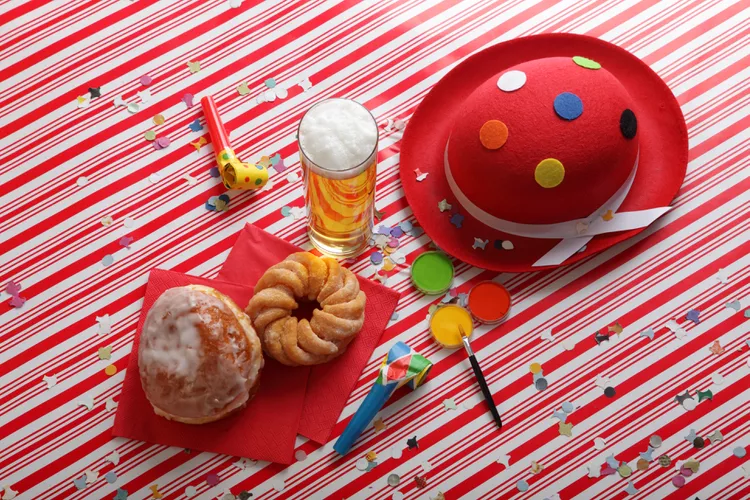Kölsch Beer
When we say this is a regional beer, we mean that only beer brewed in and around Köln can be called Kölsch – similar to champagne. Known as a PGI (protected geographical indication), the Kölsch Konvention dictates that it must be brewed within a 50 km zone around Cologne. Moreover, foreign brewers have become enamored with this clean-drinking beer; however, as they are forbidden by law from calling it Kölsch, you will see it listed as “Kölsch-style.”
The beer is comparable to a Pilsner—top-fermented, pale yellow, and refreshing. It meets the standards of Reinheitsgebot and is traditionally a warm-fermenting beer, not a lager as it is sometimes inaccurately described. It has a gravity between 11 and 16 degrees.
Ordering a Kölsch
Along with the specific definition, the serving of this beer from Cologne has its own customs. Kölsch is served in 0.2 liter cylinder glasses, which are relatively delicate when compared to other German glassware (e.g., the Mass used during Oktoberfest). These glasses are known as Stange and prevent Kölsch from growing flat.
These glasses serve as your ordering system at a Cologne bar or biergarten. Waiters, called Köbes, are dressed in blue shirts, dark trousers, and an apron. They are armed with circular trays (Kölschkranz) of beer to provide prompt refills. Their watchful eyes are trained to spot newcomers to outfit them with a glass. Therefore, there is no need to signal the waiter—certainly don’t snap, and God help you if you want to order anything other than a Cologne Kölsch. Köbes are an institution in Cologne, renowned for their thick Kölsch dialect and hard-nosed humor.
Once they have put down a coaster and topped it with a full beer, they will mark the beer mat with a tick for each new beer. The Köbes and the Kölsch will keep coming until you place the coaster atop your glass. At that time, be prepared to pay (and tip from 5-10%).
Kölsch Breweries
Only thirteen breweries are authorized to produce authentic Kölsch. Popular Brauhauser (brewpubs) and brands include:
- Früh – Located near the Cathedral, this historic brewery is over 100 years old with a boisterous beer cellar.
- Gaffel – This brewery and pub provides a great example of classic Kölsch just off from the train station.
- Reissdorf – A favorite of locals, this place comes with a bowling alley in the basement.
- Dom – Popular with visitors and locals.
- Sion – Destroyed in WWII, this brewery is back to serving traditional Kölsch brew and food complete with a biergarten.
- Brauhaus zur Malzmühle – Open for over 150 years, this is one of the most popular brewhouse restaurants with Cologne specialties.
- Peters Brauhaus – In the center of the old city, this is the place to be for Carnival.
What to Eat with Kölsch
Despite their beer’s diminutive size, they can pack a punch. Rather than keeping an eye on your coaster’s ticks, balance out your visit with some Cologne delicacies. However, beware that these often go by a different name than in other parts of Germany.
- Halver Hahn – While this might sound like the beer hall classic of chicken, it’s actually a rye roll with cheese, butter, and mustard.
- Himmel un Ääd (Heaven and earth) – Black pudding (Flönz), fried onions, and mashed potatoes with apple sauce, a mixture of apple pieces (heaven) and mashed potatoes (earth).
- Kölsche Kaviar – Flönz, rye roll, and onions.
- Rheinischer Soorbrode – Traditionally made with horse meat (though beef is usually substituted nowadays), this dish is marinated in vinegar and spices for several days before being served with dumplings and Rotkohl (red cabbage).
- Hämmche – Boiled pork knuckle.
- Rievkoche or Reibekuchen – Usually called Kartoffelpuffer in other parts of Germany, these are savory potato pancakes often topped with apple sauce.
- Halber Meter Bratwurst – Can’t go wrong with a sausage, especially one that measures half a meter.





